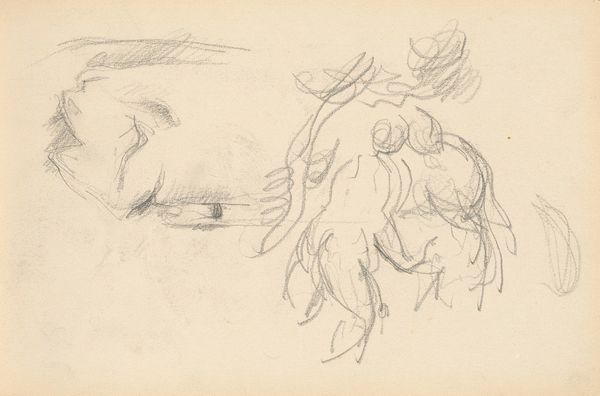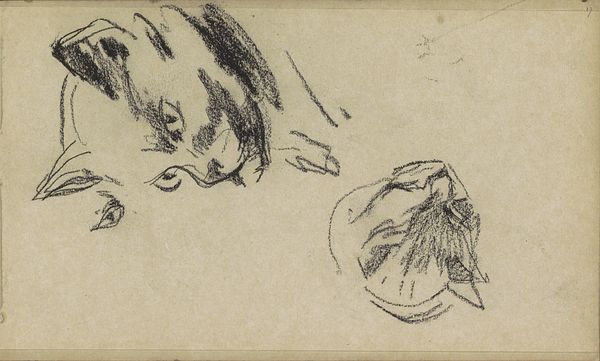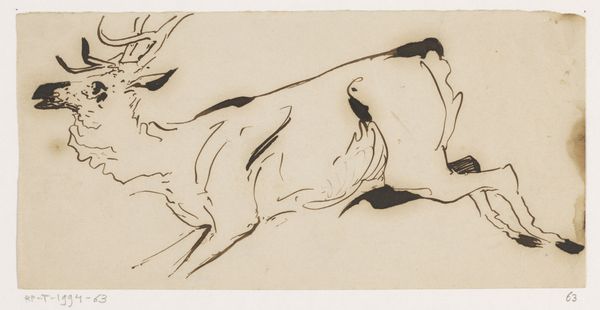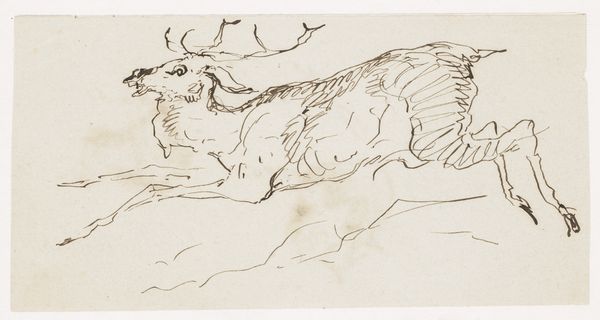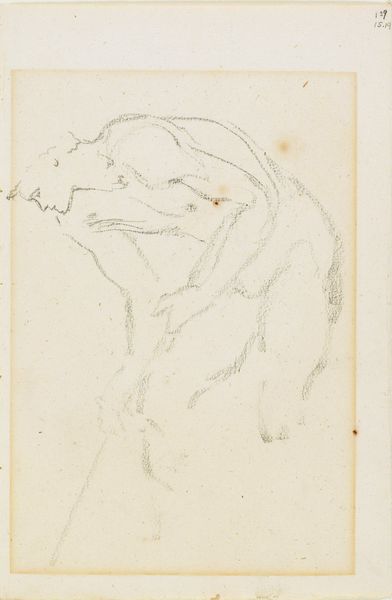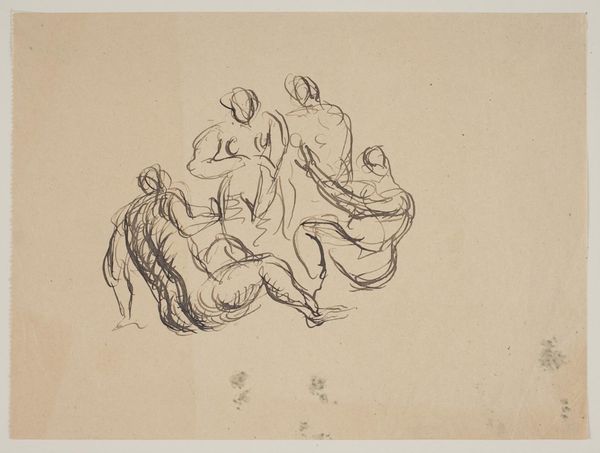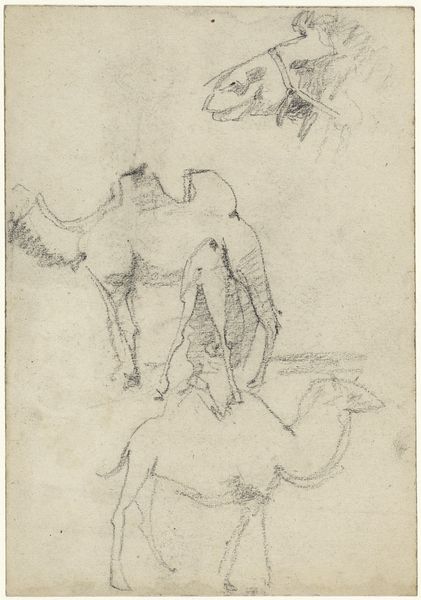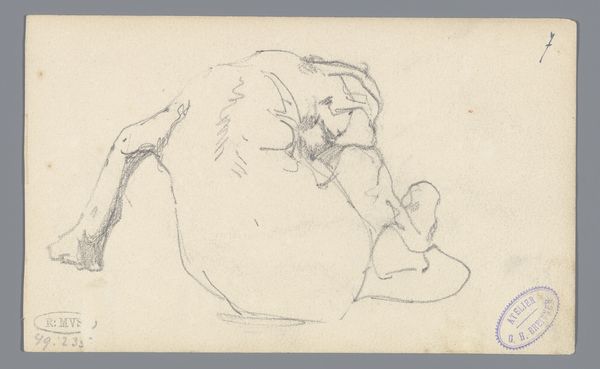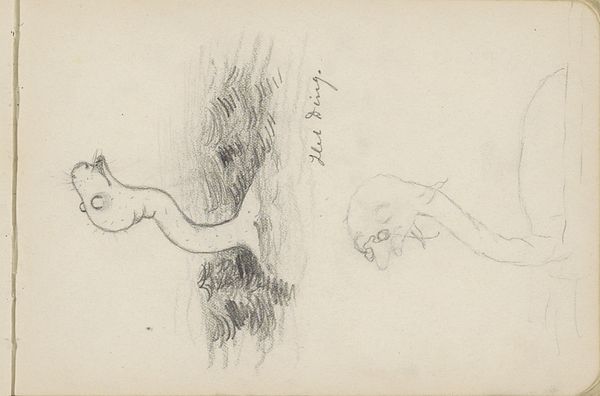
drawing, pencil
#
drawing
#
pencil sketch
#
landscape
#
pencil
#
watercolor
#
realism
Dimensions: height 58 mm, width 95 mm
Copyright: Rijks Museum: Open Domain
Johannes Tavenraat made this tiny drawing called "Koe en kop" – Cow and Head – with pen in gray and brown ink, sometime in the 19th century. At this time, the Netherlands was proud of its agricultural industry. In a way, it was considered to be the backbone of their economy. Cows were not just farm animals; they were symbols of national pride, appearing in art, literature, and popular culture. Tavenraat's sketch captures this sentiment, though in a muted way. It shows the essence of rural life, where animals like cows were central to people's livelihoods. As art historians, we can delve into the socio-economic factors that shaped this artwork, examining archival records and historical texts to understand the role of agriculture in 19th-century Netherlands, and Tavenraat's place within it.
Comments
No comments
Be the first to comment and join the conversation on the ultimate creative platform.
